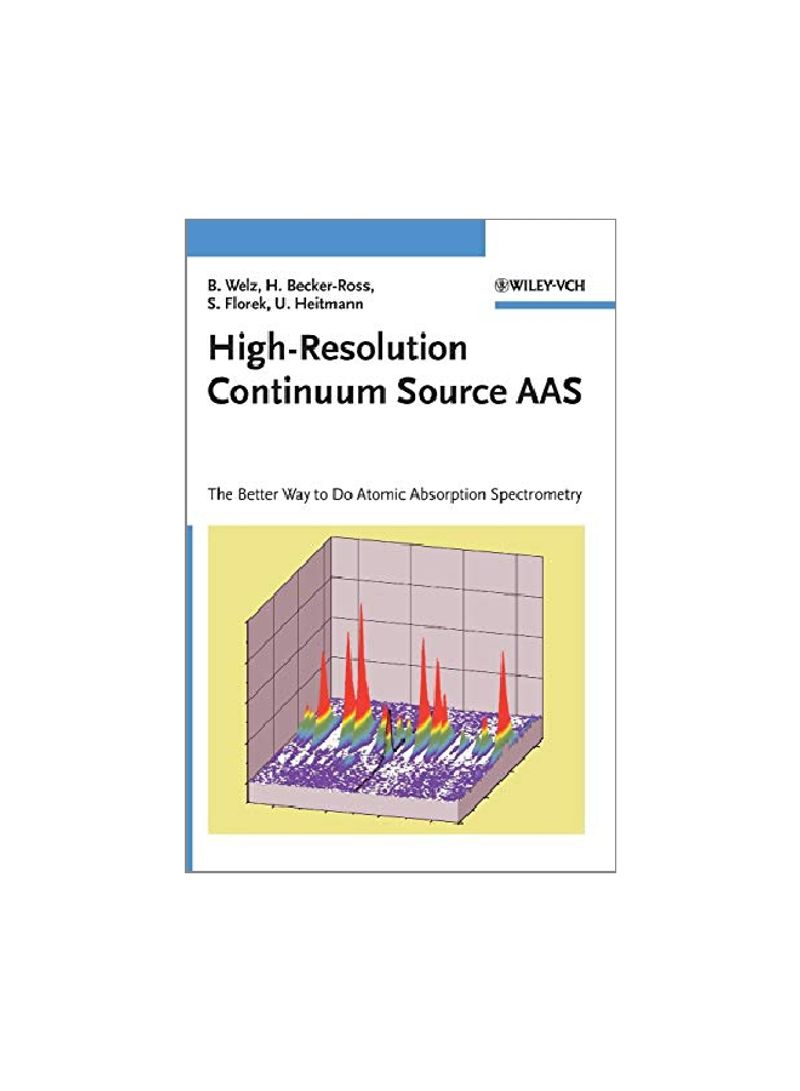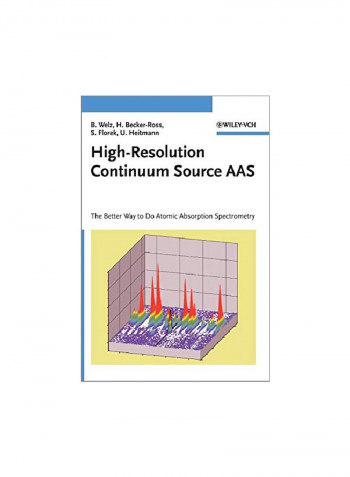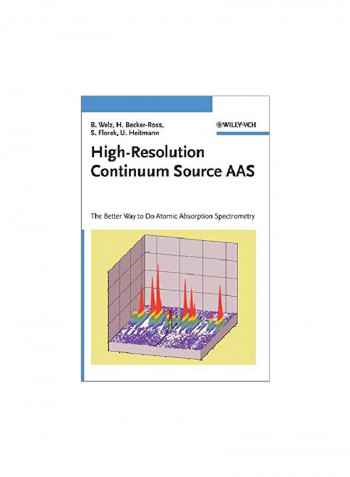High-resolution Continuum Source Aas: The Better Way To Do Atomic Absorption Spectrometry Hardcover
Recommend
Sort by
Rating
Date
Specifications
Author 1
Bernhard Welz
Book Description
High--resolution continuum source atomic absorption spectrometry (hr--cs aas) is the most revolutionary innovation since the introduction of aas in 1955. Here, the authors provide the first complete and comprehensive discussion of hr--cs aas and its application to the analysis of a variety of difficult matrices. Published just in time with the first commercial instrument available for this new technique, the book is a must for all those who want to know more about hr--cs aas, and in particular for all future users. The advantages of the new technique over conventional line--source aas are clearly demonstrated using practical examples and numerous figures, many in full color. Hr--cs aas is overcoming essentially all the remaining limitations of established aas, particularly the notorious problem of accurate background measurement and correction. Using a continuum radiation source and a ccd array detector makes the spectral environment visible to several tenths of a nanometer on both sides of the analytical line, tremendously facilitating method development and elimination of interferences. Conceived as a supplement to the standard reference work on aas by b. Welz and m. Sperling, this book does not repeat such fundamentals as the principles of atomizers or atomization mechanisms. Instead, it is strictly focused on new and additional information required to profit from hr--cs aas. It presents characteristic concentration for flame atomization and characteristic mass data for electrothermal atomization for all elements, as well as listing numerous secondary lines of lower sensitivity for the determination of higher analyte concentrations. The highly resolved molecular absorption spectra of nitric, sulfuric and phosphoric acids, observed in an air--acetylene flame, which are depicted together with the atomic lines of all elements, make it possible to predict potential spectral interferences.
ISBN-10
3527307362
ISBN-13
9783527307364
Language
English
Publisher
Wiley-VCH Verlag GmbH
Publication Date
6 May 2005
Number of Pages
296
About the Author
High--resolution continuum source atomic absorption spectrometry (hr--cs aas) is the most revolutionary innovation since the introduction of aas in 1955. Here, the authors provide the first complete and comprehensive discussion of hr--cs aas and its application to the analysis of a variety of difficult matrices. Published just in time with the first commercial instrument available for this new technique, the book is a must for all those who want to know more about hr--cs aas, and in particular for all future users. The advantages of the new technique over conventional line--source aas are clearly demonstrated using practical examples and numerous figures, many in full color. Hr--cs aas is overcoming essentially all the remaining limitations of established aas, particularly the notorious problem of accurate background measurement and correction. Using a continuum radiation source and a ccd array detector makes the spectral environment visible to several tenths of a nanometer on both sides of the analytical line, tremendously facilitating method development and elimination of interferences. Conceived as a supplement to the standard reference work on aas by b. Welz and m. Sperling, this book does not repeat such fundamentals as the principles of atomizers or atomization mechanisms. Instead, it is strictly focused on new and additional information required to profit from hr--cs aas. It presents characteristic concentration for flame atomization and characteristic mass data for electrothermal atomization for all elements, as well as listing numerous secondary lines of lower sensitivity for the determination of higher analyte concentrations. The highly resolved molecular absorption spectra of nitric, sulfuric and phosphoric acids, observed in an air--acetylene flame, which are depicted together with the atomic lines of all elements, make it possible to predict potential spectral interferences.
Author 2
Helmut Becker-Ross
Author 3
Stefan Florek
Author 4
Uwe Heitmann
Editorial Review
Given the likelihood that the future of atomic absorption spectrometry lies with CS AAS, it would be highly desirable for any collection serving researchers who use atomic absorption spectrometry. (E-STREAMS, June 2006) "...excellent science...and clear presentation offered in this volume. I highly recommended it for readers who are in involved in fundamental research using atomic spectroscopy..." (Journal of the American Chemical Society, July 20, 2005)



